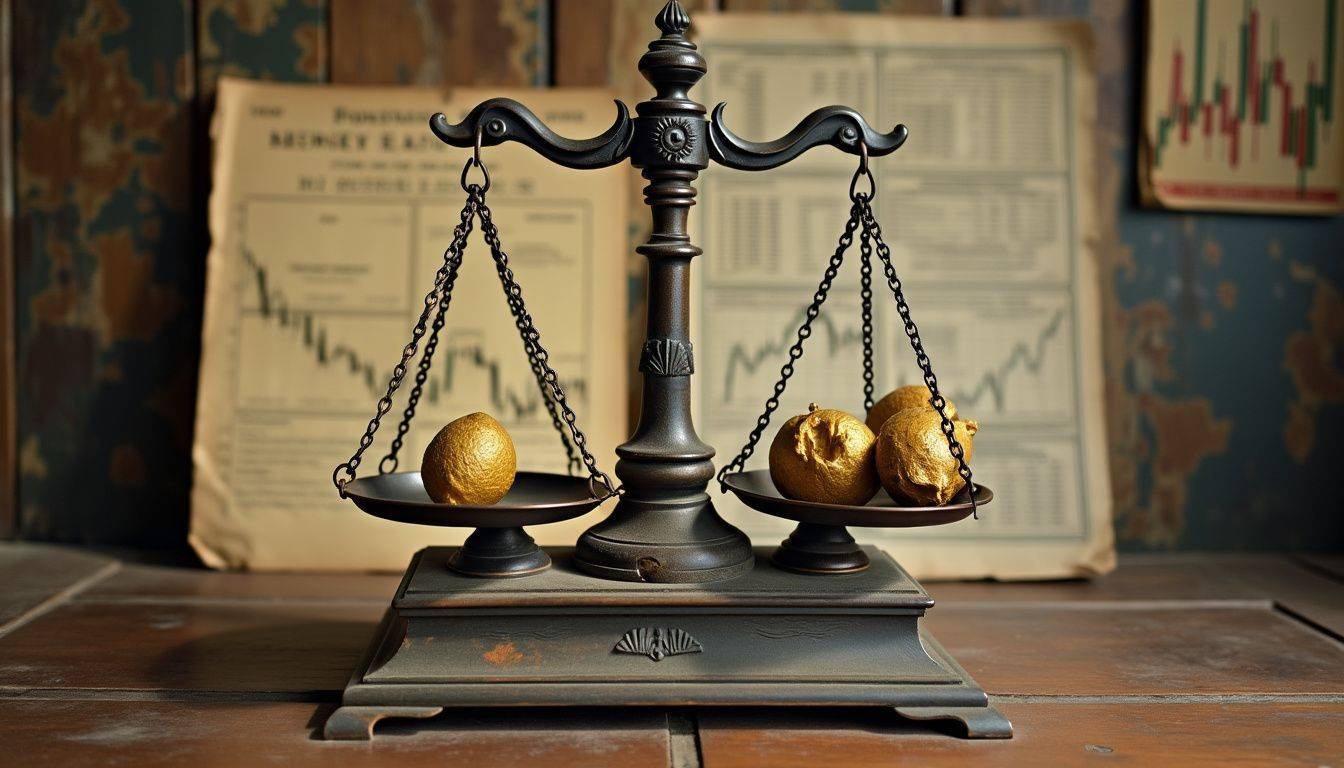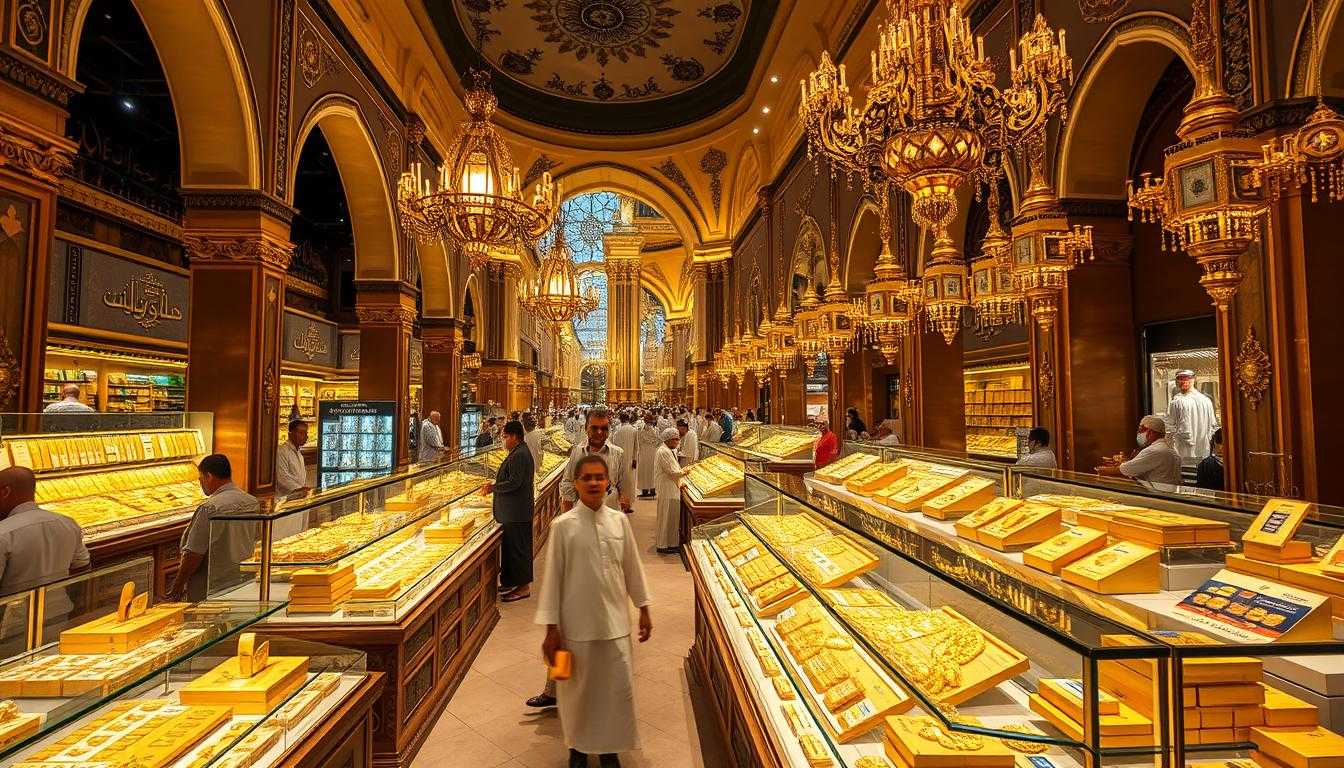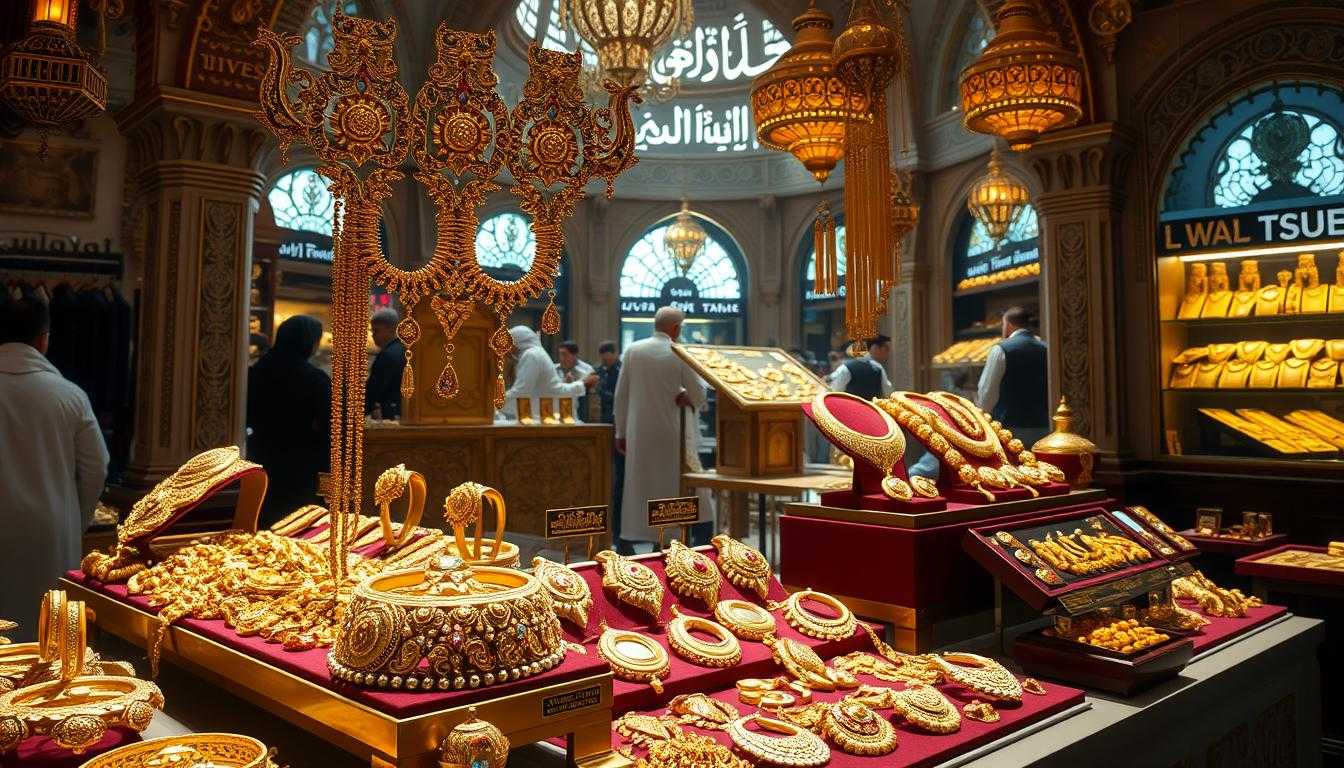Ever felt puzzled regarding the impact of gold prices on your personal financial health and the broader market? You aren’t alone. Numerous traders and investors struggle to understand the relationship between fluctuating gold rates and their financial implications.
Here’s an interesting detail: Gold isn’t merely a gleaming metal; its price variance affects forex, oil markets, stock indices, and even cryptocurrencies.
In our discussion today, we aim to dispel this confusion. We will discuss the reasons behind central banks accumulating gold similar to treasure collectors and its effect on our economy.
Moreover, we will also discuss how alterations in interest rates can make gold more or less attractive as an investment in comparison to saving money traditionally or investing in tech stocks.
Be assured, we have suggestions on how to capitalize on existing gold prices to strengthen your financial strategies. Eager to decode the mystery surrounding gold? Let’s proceed!
Key Factors Influencing Gold Prices
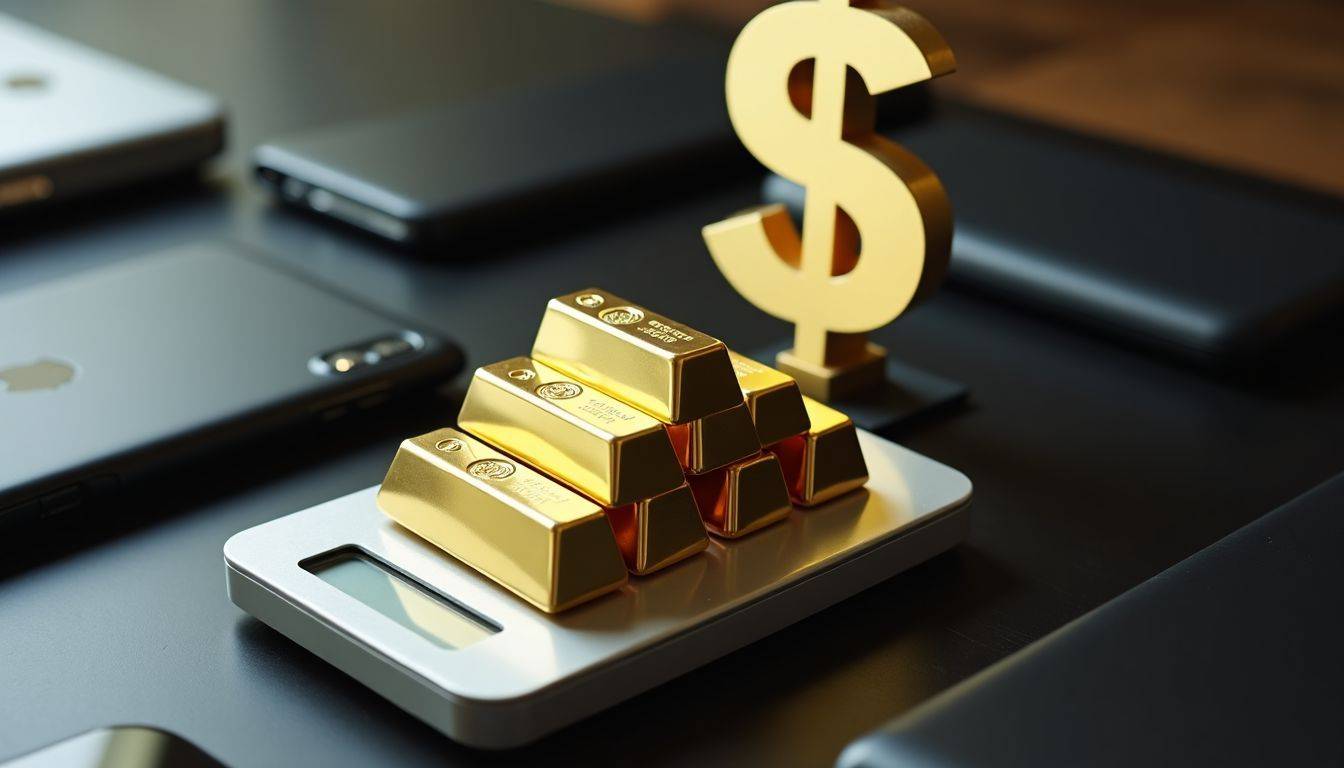
Okay, so you want to know what moves gold prices, right? Think of it like a seesaw. On one side, we’ve got big banks holding tons of this shiny stuff and countries that love gold jewelry pushing down hard.
On the other side, there’s the U.S. dollar doing its dance—when it goes up, gold often takes a dive. And don’t forget about all those gadgets and tech that need gold to work! That’s another weight on our seesaw.
So yeah, it’s kind of like watching a game where different players come in, each changing how high or low gold prices go.
Central Bank Reserves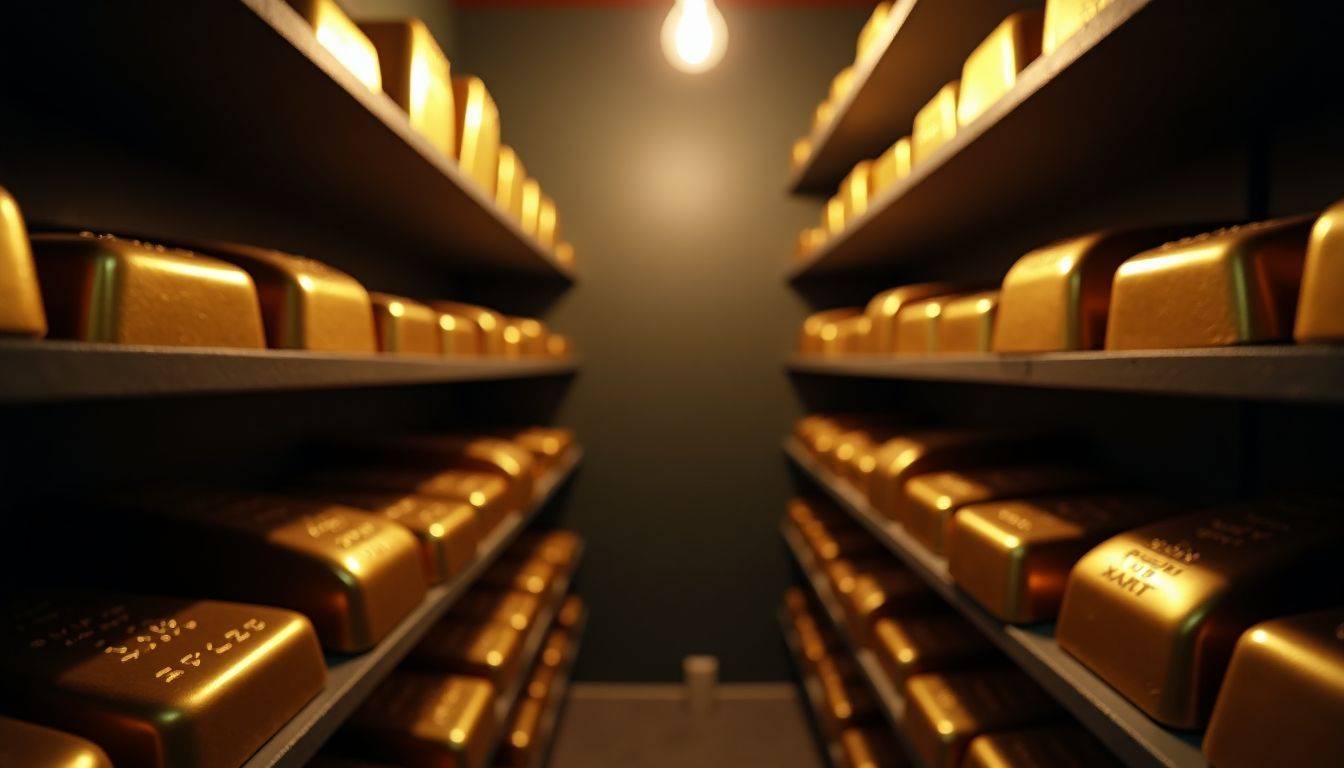
Central banks have a significant role in shaping gold prices. They maintain substantial gold reserves as a buffer during economic difficulties. The act of central banks purchasing more gold can instigate the impression of gold having a higher value, potentially causing a rise in gold prices.
Gold serves as a protective measure against economic instability for central banks, similar to its function for personal investors.
They also engage in the practice of selling. If they choose to unload some of their reserves, it affects the gold quantity available for others to purchase. This action could potentially decrease prices if they offload a considerable amount simultaneously.
Therefore, monitoring the actions of these key entities can provide insights on potential future price directions.
U.S. Dollar Value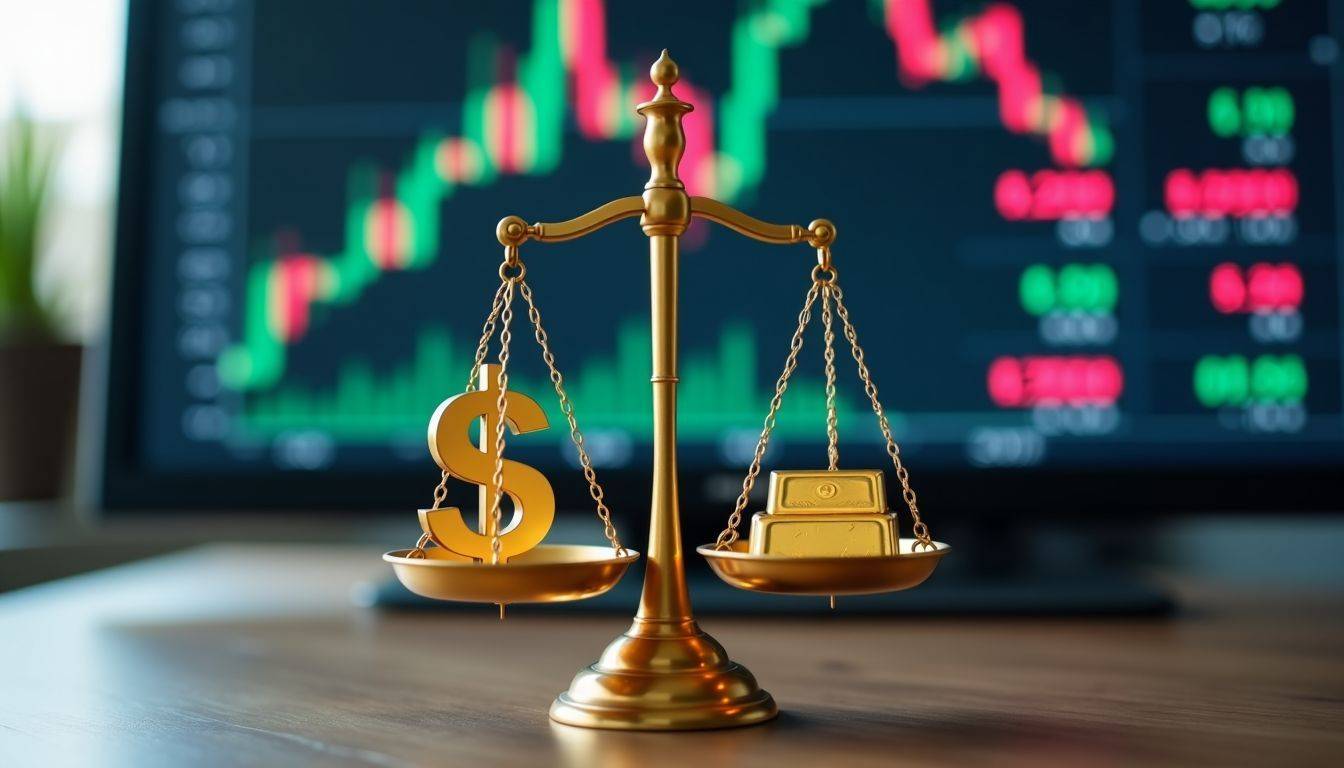
The U.S. dollar value plays a big role in gold prices. If the dollar gets stronger, gold often becomes cheaper for investors using other currencies. This can lead to less demand for gold, causing its price to drop.
On the flip side, if the dollar weakens, gold prices can go up because it becomes more expensive in other currencies, driving higher demand.
Investment strategies change when the U.S. dollar’s value shifts. Traders keep an eye on these changes to make smart moves with their money in assets like gold and equities. Analysts also watch how these trends affect market dynamics overall, giving advice based on current economic policies and federal reserve actions that impact liquidity and currency value across global markets.
Global Jewelry and Industrial Demand
Moving from the value of the U.S. dollar, we see another big player: global need for gold in jewelry and industry. It really shakes things up for gold prices. People around the world love gold jewelry.
This love affects how much gold costs. Also, many industries use gold for different products.
For example, every year, changes in how much jewelry people buy can make gold prices go up or down. Not just that – where economic conditions are good or bad also influences this demand heavily.
Tech companies rely on gold too for making parts of gadgets and electronics. These two sides of demand – one shiny and one practical – keep the market lively and unpredictable.
Gold’s Role in Financial Markets

Gold shines bright in the big world of money and investing. It’s like a superhero, fighting inflation and helping people not lose their money when things get rough in the market.
Hedge Against Inflation
Prices go up over time. This is inflation. Gold helps protect money from losing value because of this. People buy gold when they think prices will rise a lot. This is because gold’s price often goes up when other things get more expensive.
Traders watch the price of gold closely. They use this info to make smart choices in tough times. Keeping an eye on daily updates can help you know when to buy or sell gold.
Risk Management Asset
Gold plays a big role in managing risks in financial markets. Its rates help shape strategies for keeping investments safe. Experts say using gold can be smart when dealing with the ups and downs of Forex, Oil, Indices, and Bitcoin markets.
They often use it to protect against losses.
Gold is more than shiny; it’s a shield for your wealth against market storms.
It’s not just about buying bars or coins. People also look into gold-related stocks and funds to spread out their risks. This way, they don’t put all their eggs in one basket. Learning from educational resources can make handling gold easier as part of an investment portfolio designed to stand strong during tough times.
Investment Demand Dynamics
Moving from how gold acts as a risk manager, we next look at what drives people to buy or sell it. Folks keep an eye on daily gold rates to decide when to make their move. They use blogs and YouTube videos for deeper insights into the market’s ups and downs.
This helps traders and investors understand when the best time is to jump into the game.
Experts compare trends in other areas like Forex, Oil, Indices, and Bitcoin with gold’s performance. This mix of information gives everyone a better picture of where gold stands in the grand scheme of things.
It’s all about catching the right wave—knowing when to hold tight and when to let go for maximum returns on your investments.
Impact of Interest Rates on Gold Prices
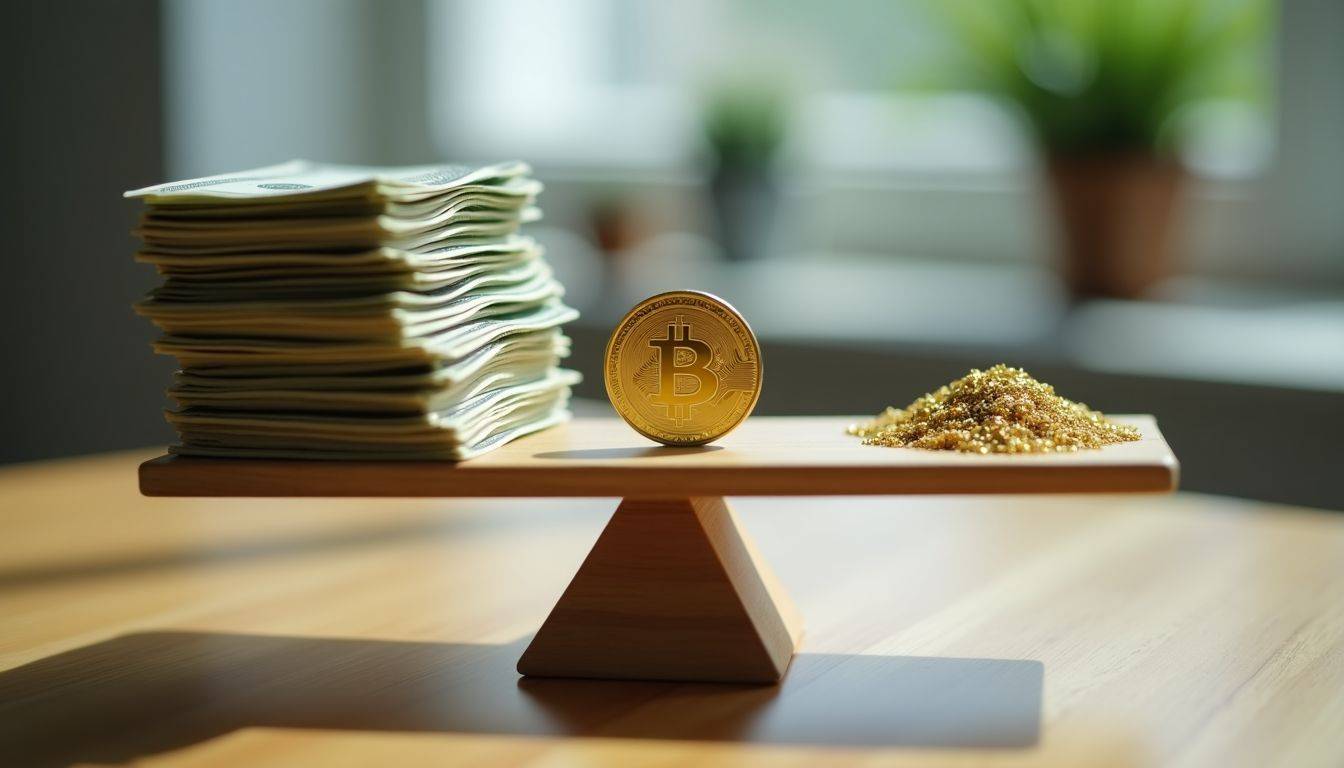
When interest rates go up, gold tends to get less popular. Think of it as choosing between two snacks. One snack pays you back over time (like bonds or savings accounts do when interest rates are high).
The other snack is tasty but doesn’t pay you back (like gold, which doesn’t earn money while you hold it). So, if the paying snack offers more return because of higher interest rates, people might pick it over gold.
Want to know how this dance between gold and interest can change your investment game? Keep reading!
Relationship with Real Interest Rates
Interest rates significantly influence gold price trends. Let’s analyze: As real interest rates rise, retaining gold becomes more expensive. The reason being, potential earnings from other profitable investments like bonds or stocks are forfeited.
Consider this an expense for bypassing a possibly more lucrative investment opportunity, thus raising the opportunity cost.
Conversely, when real interest rates decrease, gold gains a more attractive position in the investor’s portfolio. The expense of forgoing potential earnings from bonds or stocks becomes less demanding.
This drives more investors towards buying gold, thereby increasing its market price. It’s essentially a strategic decision aimed at maximizing long-term monetary gain – a fundamental aspect of investor behavior.
Effects of Federal Reserve Policies
Moving from how real interest rates affect gold, The Fed plays a big role too. The Federal Reserve changes interest rates based on how the economy is doing. These changes can make gold prices go up or down.
For example, when The Fed raises rates, people might sell gold because they can get more money from savings or bonds. But if The Fed lowers rates, gold becomes more attractive since you don’t lose out by not having your money in a bank.
The Federal Reserve’s decision to change rates is a big deal for anyone with investments in gold. Lowering rates often leads to higher gold prices because it costs less for investors to hold onto their gold instead of putting money in places with fixed returns like bonds.
This makes sense especially during times of economic worry or high inflation when people look for safe places to keep their value.
Always watch what The Fed does; it’s crucial for your gold investment strategy.
The Role of Gold in Economic Uncertainty
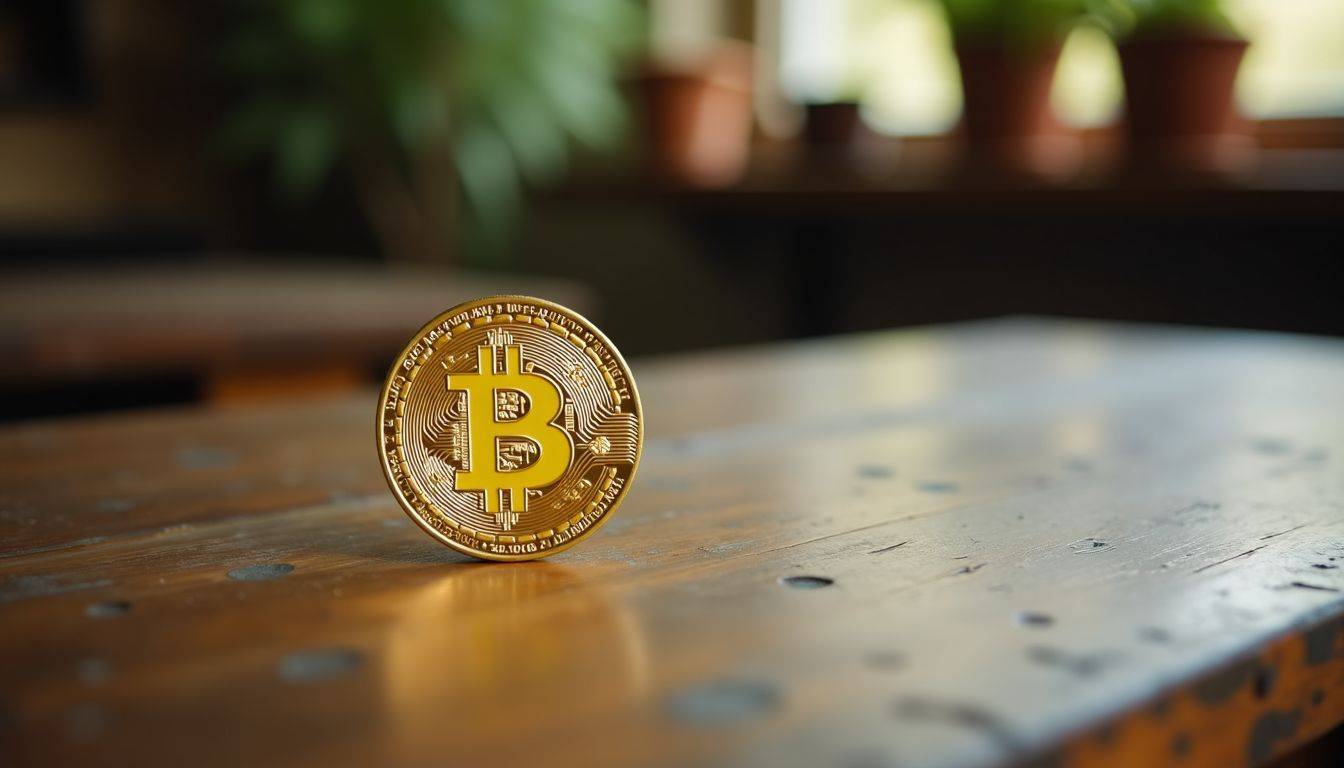
In times of economic worry, gold shines as a safe spot for money. This is because it often keeps its value when things get rough. So, if you’re worried about the market going wild or prices jumping up, consider gold.
It might just be the calm in the storm you’re looking for.
Performance During Geopolitical Risks
Gold shines during tough times. Think about moments when countries don’t get along or big changes happen in world politics. These events make people worry about their money’s safety.
They start looking for a safe place to keep their wealth, and that’s where gold comes into play. Because of this, the price of gold often goes up when there’s trouble around the world.
Experts and daily market updates help traders make smart choices with gold during these uncertain times. They use tools like SPDR Gold Shares (GLD) and CME Group Gold Futures to invest wisely and protect their money against big swings in the economy.
Moving on, we’ll see how gold acts as a sturdy shield during market shakes.
Gold as a Safe Haven During Market Volatility
Market swings make investors nervous. They look for something steady, like gold. This shiny metal has been a go-to in tough times for years. It’s a safe haven because it doesn’t jump around like stocks can when things get rough in the economy.
People buy more gold during uncertainties, such as a big political change or when the cost of living goes up fast. This demand pushes gold prices higher, making it a good shield against losing money.
Gold also stands strong when the dollar isn’t doing so well. Since they move in opposite directions, a weaker dollar makes gold cheaper for people using other currencies. This boosts its appeal and drives up sales globally.
So, investing in this metal can be smart during market ups and downs, especially if you’re trying to keep your money safe from inflation and dropping currency values.
In volatility there is opportunity.
Maximizing Your Financial Potential with Today’s Gold Prices
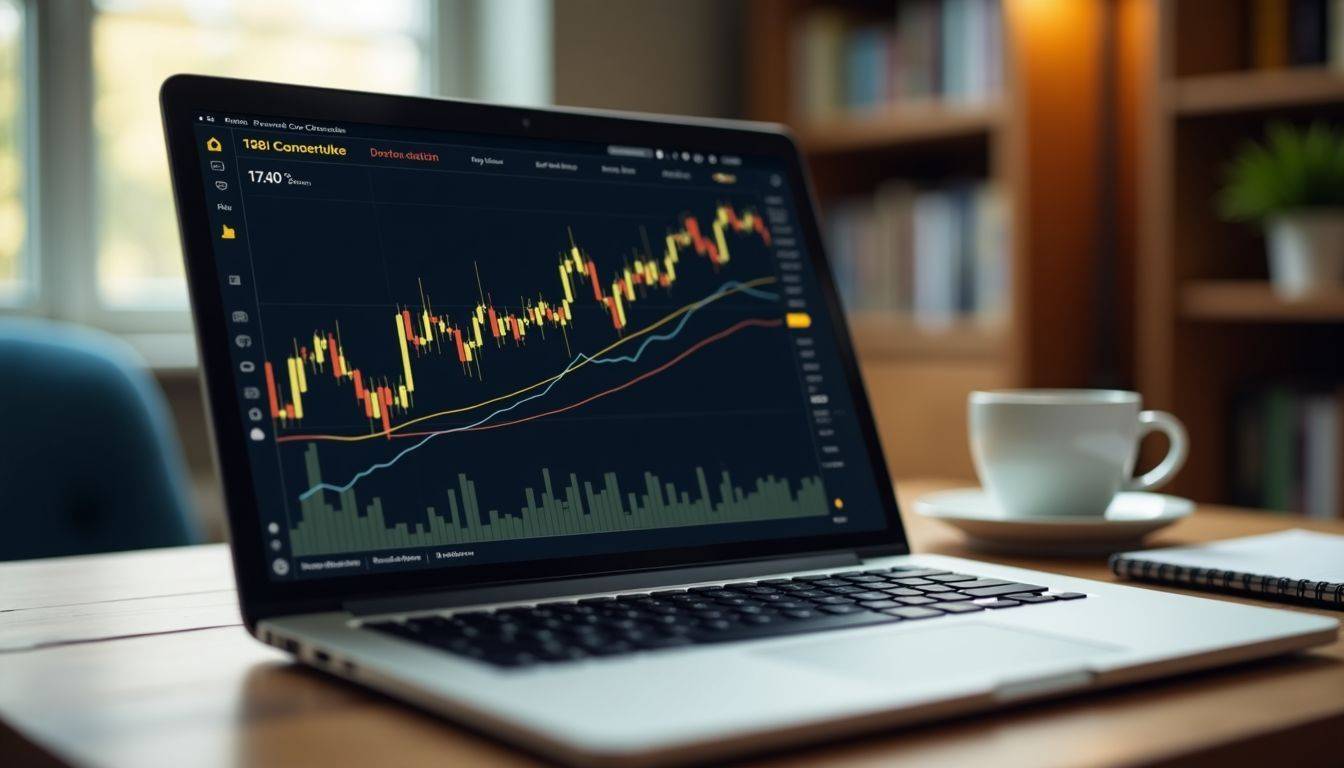
Gold prices change every day. This can be good for your wallet if you know how to use it. Right now, gold rates are a big deal in the finance world. They help people decide where to put their money.
You can make more money with gold by watching the market closely. Experts say that learning about supply and demand is key. Also, keeping an eye on things like inflation rates and central bank actions helps a lot.
These factors affect gold prices a lot.
For traders and investors looking to get ahead, using tools like exchange-traded funds (ETFs) can be smart. ETFs let you invest in gold without having to buy physical bars or coins.
This way is easier and often safer.
So, paying attention to daily updates from analysts is smart too. They give tips that could lead to smart moves in buying or selling gold stuff at profit-winning times.
Future Trends in Gold Prices

Looking ahead, gold prices might take us on a wild ride. With ETFs and big banks playing the game, we can expect some twists and turns in 2024 and beyond.
Predictions for 2024 and Beyond
Gold prices in 2024 might go up and down because of how the economy does. People think gold is very important when markets are not sure. If you want to do well with gold, watching the market closely will help.
Exchange Traded Funds (ETFs) and central banks buying more gold can change prices too.
In times of trouble, like with COVID-19 or when money value drops, many turn to gold as a safe place. This makes its price move in interesting ways. Knowing about future trading and having an adviser can guide your choices in this changing market, aiming for capital growth.
Influence of ETFs and Central Bank BuyingETFs and central banks play big roles in the gold market. They shape how much gold people want and how much is out there for buying. ETFs make it easy for folks to invest in gold. This pushes up demand.
Central banks buy a lot of gold too. They use it to keep their money safe and stable.
These actions can make gold prices go up or down. Traders need to watch what ETFs and central banks are doing with gold. It helps them guess where prices might head next. So, understanding these moves is key for making smart choices in the market.
Conclusion
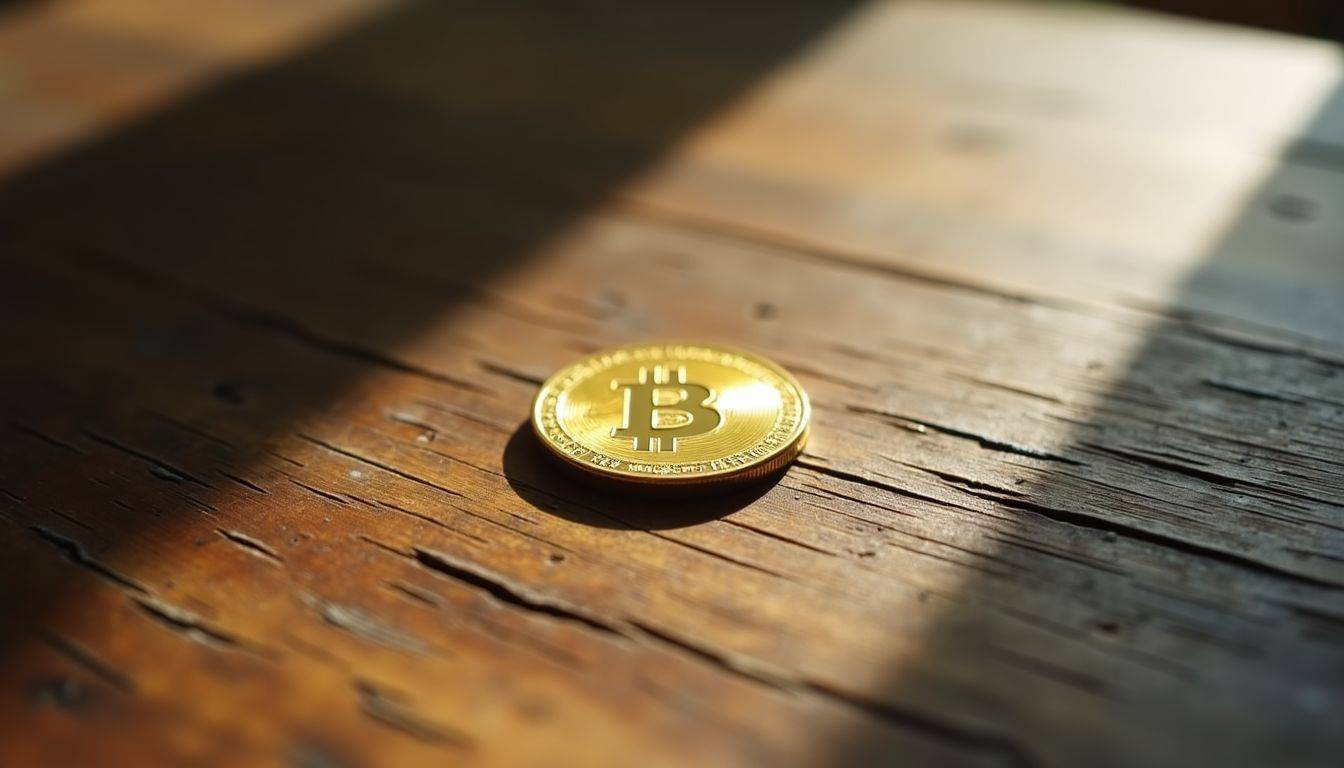
Gold rates shape markets. They change how investors think and act. Central banks and the U.S. dollar sway gold prices. Gold fights inflation and is a safe bet in tough times. It reacts to interest rates and global issues, too.
Today, using gold wisely can boost your money’s power. Watching trends helps guess future prices. Buying into gold funds or physical gold are ways to invest.
So, keep an eye on gold for smarter choices in investing. This metal might just be the key you need for growth in your portfolio.
For more insights on how to leverage current market conditions for gold investments, visit our detailed guide on maximizing your financial potential with today’s gold prices.
FAQs
1. What’s the role of gold rates in shaping financial market dynamics?
Gold rates play a big part in shaping financial market dynamics. They can affect asset classes like real estate and equity investments, influence monetary policy decisions by central banks, and impact investor sentiment.
2. How does investing in gold help during times of economic uncertainty or inflationary pressures?
Investing in gold is often seen as an “inflation hedge”. During periods of rising inflation or geopolitical uncertainty, many investors turn to gold for its potential capital appreciation and portfolio diversification benefits.
3. Can you explain how global economic growth impacts the price of gold?
Sure! When there’s robust global economic growth, it could lead to increased demand for commodities including gold. This might push up the prices. However, if economic conditions weaken (like during the Covid-19 pandemic), investors might flock to safe assets like U.S treasuries instead.
4. Why do some people prefer investing in physical gold over other forms such as futures trading or mining stocks?
Some folks are more comfortable with tangible assets they can touch – hence their preference for physical bullion over futures contracts or miners’ shares. Also, owning actual metal doesn’t involve any counterparty risks unlike when you’re dealing with broker-dealers or investment advisors.
5. How does currency devaluation affect the value of my investment in gold?
When currencies lose their value due to factors like changes in central bank policies or geopolitical instability – guess what happens? The price of your shiny yellow metal typically goes up because it retains its intrinsic worth even when paper money doesn’t!
6.What should I consider before adding this glittery asset into my portfolio mix?
Well…you should think about your risk tolerance level and investment goals first off! Then seek advice from a registered investment advisor who understands your situation well enough to guide you on things like asset allocation strategies involving precious metals.

